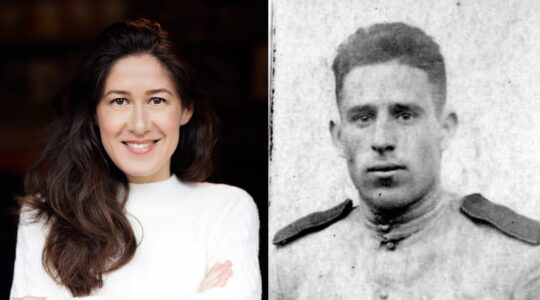I remember exactly where I was when I heard that the Space Shuttle Challenger had exploded 73 seconds after lift-off just before noon on Jan. 28, 1986 in Cape Canaveral, Fla. School was closed for parent-teacher conferences that day, but we had been assigned to watch the launch on television for homework. I was sitting cross-legged on the living room floor, watching the shuttle climb higher and higher and then … disaster. There was an explosion of smoke, the plume splitting into two, and then the trail of destruction lingering in the skies. My mind couldn’t register what my eyes were taking in, and I knew that I wasn’t alone in my confusion.
What I didn’t know then that I do know now is that confusion was at the heart of what caused the Space Shuttle Challenger to explode mid-air. According to the “Report to the President by the Presidential Commission on the Space Shuttle Challenger Accident,” on the night before the launch, a group of engineers and a group of project managers met by teleconference to discuss whether or not the launch should proceed.
The engineers felt strongly that the space shuttle’s O-ring seals were under too much stress, which could result in “catastrophe of the highest order – loss of human life.” The project managers, on the other hand, were reluctant to delay the launch for fear that it would negatively impact the shuttle program’s reputation for dependable delivery. As the two teams argued repeatedly over whether or not to proceed, the lead for the project managers, Jerry Mason, turned to the lead for the engineering team, Bob Lund, and told him, “Take off your engineering hat and put on your management hat.”
I believe the leadership was right to recognize and acknowledge that there were two different perspectives embattled with each other. Where they ultimately fell short was in thinking that there were only two perspectives – engineering and management – worth considering. What were the third, fourth or even fifth hats worth trying on? Maybe that of the astronauts themselves. Perhaps the perspective of their parents and loved ones. Or even that of looking back on the impact of a timely launch or a safety delay 25 years in the future. What would have been the best point of view? I don’t know the answer other than to imagine that any other choice could have been better. What I do know is that by limiting the discussion to an either-or choice – science or business – seven astronauts lost their lives that day.
In hindsight, it’s easy to say that the key decision makers chose the wrong hat to wear of the two choices that they considered. But for those of us who are challenged every day with solving problems (problems that are hopefully not life-and-death ones), we want to know ahead of time which hat will get us closer to the right decision or best course of action. That is, of course, assuming that we recognize that there are multiple perspectives available to us – not just the one that’s top of mind, or most popular with the crowd, or easiest to justify to ourselves. As Maimonides writes in his “Guide for the Perplexed,” “Men like the opinions to which they have been accustomed from their youth; they defend them, and shun contrary views: and this is one of the things that prevents men from finding truth, for they cling to the opinions of habit.”
In their book, “Bozo Sapiens: Why to Err is Human,” authors Michael and Ellen Kaplan agree: “The reason we have different hats to think with is that no single viewpoint can take in all of a complex world … [our] fundamental assumptions about the world depend on [our] different experiences and expertise.”
I would add our geography to that list. During my first Shabbat in Beijing, I was startled from my prayers when the service leader announced, “Please rise and face west.” West? Not east? Well, when you are trying to face Jerusalem from the other side of the globe, you’re looking west. I couldn’t have anticipated a more literal shift in perspective that this one.
“What’s another way of looking at this?” is a frequent question that I ask my coaching clients, whether they are launching a career change, seeking a life partner, or trying to manage up, down and across the organization. The very question alone often stops them in their tracks, especially when it hadn’t occurred to them that there could be different perspectives worth considering. What follows my question (and their answer) is often a repeat of the same question, “And now, what’s another way of looking at this?” I don’t want my clients to be limited to black or white (engineering or management) perspectives. There’s another other way to see the problem, issue or decision. The possible perspectives are endless — once you’ve opened the door to allowing them in.
My client Ava came to coaching after she had just been laid off from her job after more than 20 years with the same management consulting company. Her default perspective was, “This isn’t fair.” After some discussion, it was clear to her that while she had every right to wear the hat of injustice, this perspective wasn’t moving her towards something — it was keeping her stuck. So I asked Ava to consider, in addition to it being unfair, what else was also true about her situation. She listed: “insulting,” “unexpected,” “challenging,” “a change,” and “an opportunity.” After reminding Ava that all of these perspectives could coexist at the same time — and that she didn’t have to give up any of them — I asked her to pick which perspective would get her closer to her goals. Ava decided that “an opportunity” was the perspective that would serve her best. While Ava had all of the other perspectives available to her (and did “visit” them at times), our coaching work together focused on what she would do next now that she saw her situation as an opportunity. What Ava did was start her own management consulting practice — a business that is thriving under her leadership. Ava chose to see an opportunity, and seized it.
Your perspective on any situation can hold you back, or it can get you closer to where you want to go. If we only consider the “opposable” perspectives — either/or, black/white, engineer/manager — deciding which path to take can feel like a challenge of Challenger proportions. But when we open ourselves up to a universe of options, the sky can be our limit — and beyond.
The New York Jewish Week brings you the stories behind the headlines, keeping you connected to Jewish life in New York. Help sustain the reporting you trust by donating today.




